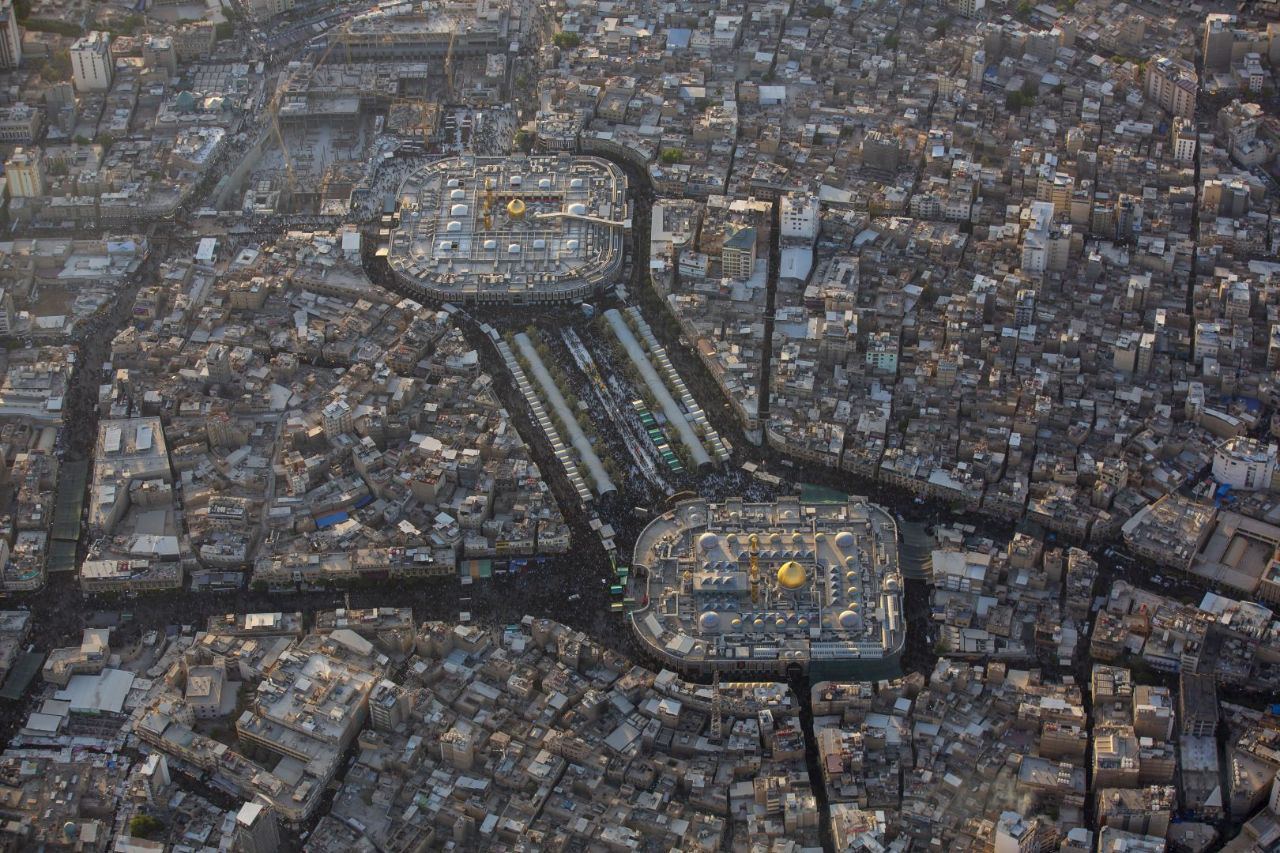Nouri Sardar
11th September 2018
The city of Karbala has a rich history that is both beautiful and tragic, beginning with the slaughter of Imam Hussain, his companions, and family by the army of Omar ibn Sa’ad as commanded by the Caliph of the time, Yazid ibn Muawiyah. Hussain refused to give allegiance to a corrupt leader like Yazid, and chose to die before legitimising such a tyrant’s rule. In his own words, Hussain said he was rising up “to revive the affairs of the Ummah of my grandfather”, and to “enjoin the good, and forbid the evil”.
Today, the shrine of Hussain attracts millions of pilgrims from all over the world, all over the year, who visit to pay their respects and worship Allah (swt) by his side. Architecturally it is a stunning sight, with beautiful minarets and a glorious dome housing his grave. The shrine’s courtyard extends beyond the mausoleum, which itself holds a sarcophagus in the form a dharih – quite literally a cage that enshrines the grave of Hussain.
Grave of Imam Hussain.
The grave and its surrounding shrine have a long and storied history with numerous constructions and demolitions, as well as the accompanying story of the city that surrounds it.

